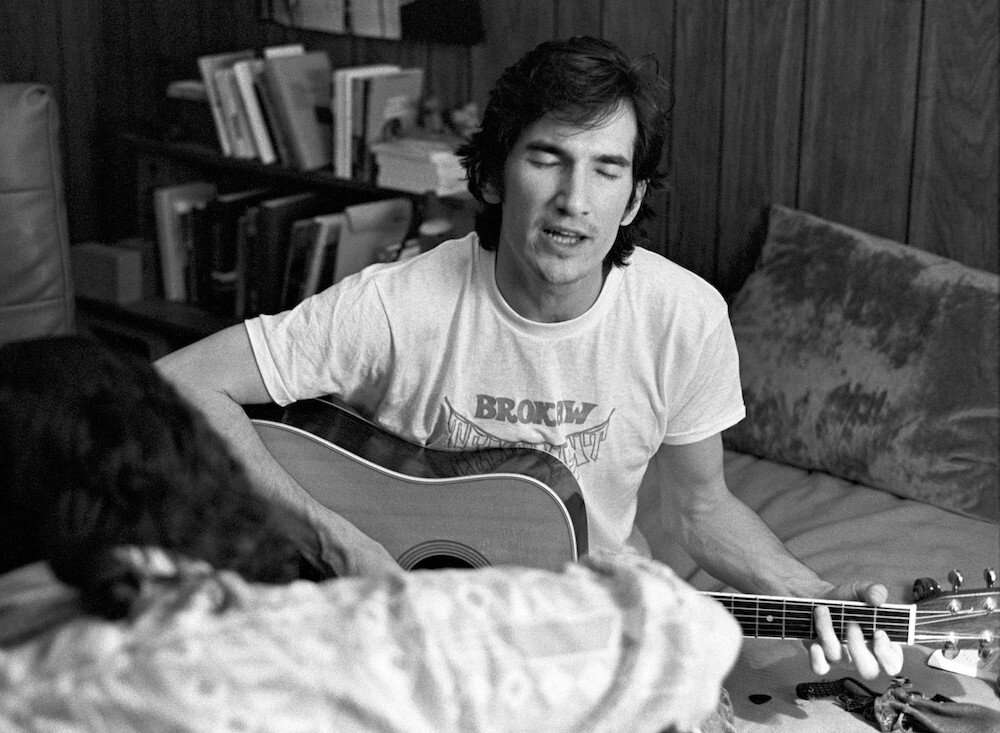Waitin’ Around to Die: the Greatest Songwriter you’ve probably never heard of
You’ll have heard of Bob Dylan and you’ll probably have heard of Willie Nelson; but have you heard of Townes Van Zandt? Although he’s been dead for over 20 years, Van Zandt is still a hugely important songwriter in the world of country, folk, and Americana music.
He was born in Texas in 1944, and was extremely bright but after starting university in Colorado , things began going downhill. He soon started to binge drink and fall into periods of deep depression, caused by his bipolar disorder. It was because of this depression that Townes had insulin shock therapy, a treatment designed to force the patient into a coma. Sadly, one outcome of this type of therapy is the loss of one’s long term memory, a side effect Townes experienced. Despite this he began playing in 1965 and by the late 60s and early 70s he had reached the height of his career.
Townes also fought a long battle against addiction. He primarily used heroin and also drank huge amounts. By the early 80s he was drinking at least a pint of vodka on a daily basis, along with the heroin. His longest period of sobriety lasted around a year at the end of the 80s but ultimately the damage was done and he died on New Years Day 1997, at only 52.
He didn’t shy away from writing about drugs. In one of his darkest songs, Waitin’ Around to Die, he wrote that after a hard life, he had “got me a friend at last”, then going on to explain that “His name’s codeine/ And he’s the nicest thing I’ve seen/ Together we’re gonna wait around and die”.
Despite all of this Townes Van Zandt is still considered one of the most poetic and lyrical, country and folk artists of all time. The country singer Steve Earle once said that Van Zandt was ‘the best songwriter in the world’ and that he’d ‘stand on Bob Dylan’s coffee table’ in his cowboy boots and say the same. His influence can be seen in the music of Bob Dylan (who was apparently a ‘big fan’), Neil Young, Willie Nelson, the late John Prine, and Emmylou Harris; along with some more recent artists like The Avett Brothers and the Kings of Leon. What’s more you’ve probably heard his music in films like Three Billboards Outside Ebbing, Missouri and The Big Lebowski and in TV shows like Breaking Bad and True Detective.
What makes Townes’ music so good is that he has the ability to transport you to another place and once there, he could make you feel anything from poetic wonder to drunken confusion. In a song like Black Widow Blues you’ll feel lost and disoriented and then in the space of a moment or two when listening to a song like Colorado Girl you’ll feel as if you’re hiding away from the rain, inside somewhere near a fire.
For me, a common theme in Townes Van Zandt’s catalogue that really stands out is simplicity. With his patterned finger picking style of guitar, he was able to completely change the way that you feel. His voice was layered and often came with much of the pain and lonesomeness that Townes experiences in his life.
His wonderful lyrics, if anything, are the most brilliant thing about him and are really more like poetry than song lyrics. In his song I’ll be here in the Morning he wrote that “There’s no prettier sight than lookin’ back in a town you left behind/ There is nothing that’s as real as a love that’s in my mind”. In one of my personal favourites, Only Him and Me, Townes sang “You’re gonna drown tomorrow/ if you cry too many tears for yesterday/Tomorrow’s half of all you’ve got/ so treat him good, ‘cause when I’m gone, he’ll stay”. He also had the ability to be quite humorous in his songwriting. In what is perhaps one of his most famous songs, Pancho and Lefty, he sang “Living on the road my friend, was gonna keep you free and clean/ Now you wear your skin like iron and your breath’s as hard as kerosene ''. Lyrics like these help to showcase Townes Van Zandt’s simple brilliance.
Throughout this career Van Zandt continued to play small venues and never really gained much notoriety, and in fact he spent much of the 1970s living in a shack with no electricity or access to a telephone. His battle with his mental health and drugs and drink left him being unable to really deal with what little fame he did have. Even within all of the darkness that Townes Van Zandt lived through, his music was clearly a little ray of light. He may not have been seen as one of the best when he was alive but now he’s gone it's probably fair that we treat him like he was.
This article was originally published by Keele University’s student newspaper Concourse on April 15th 2020.


